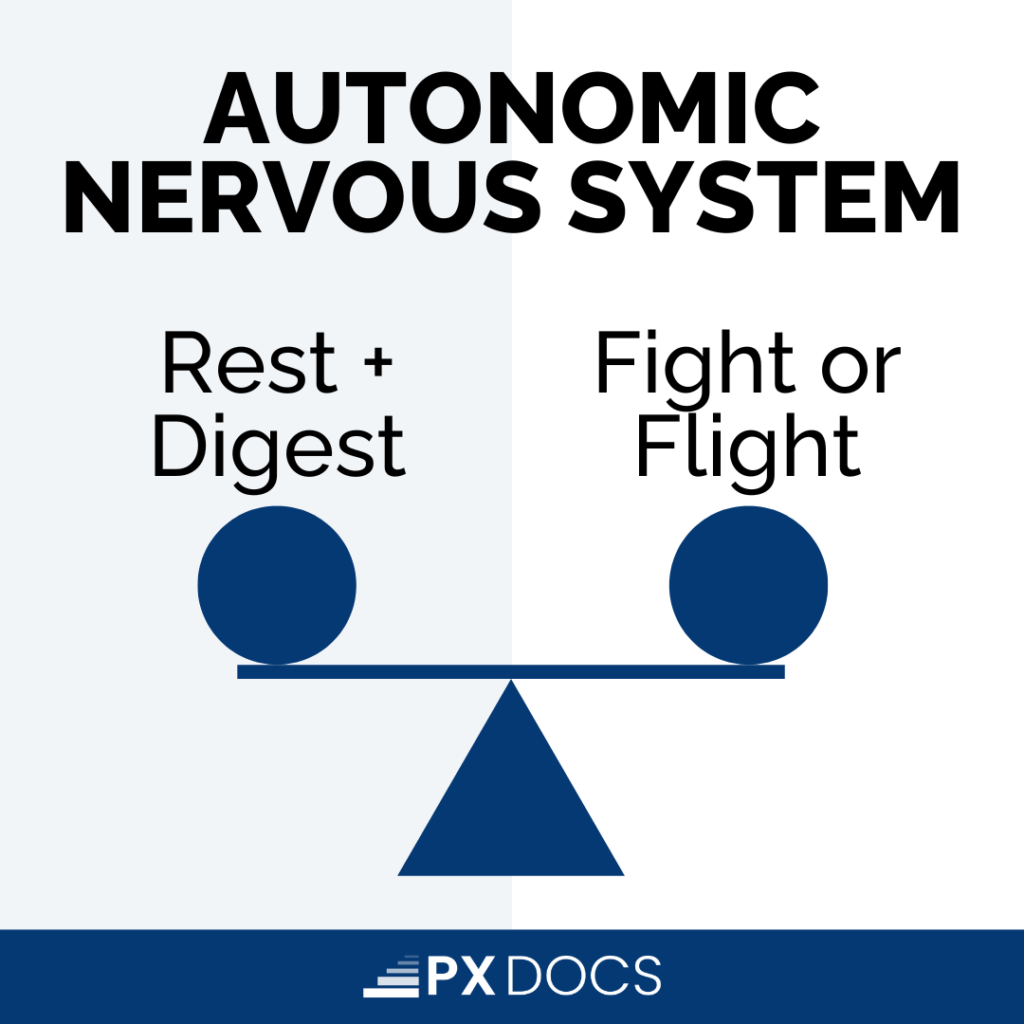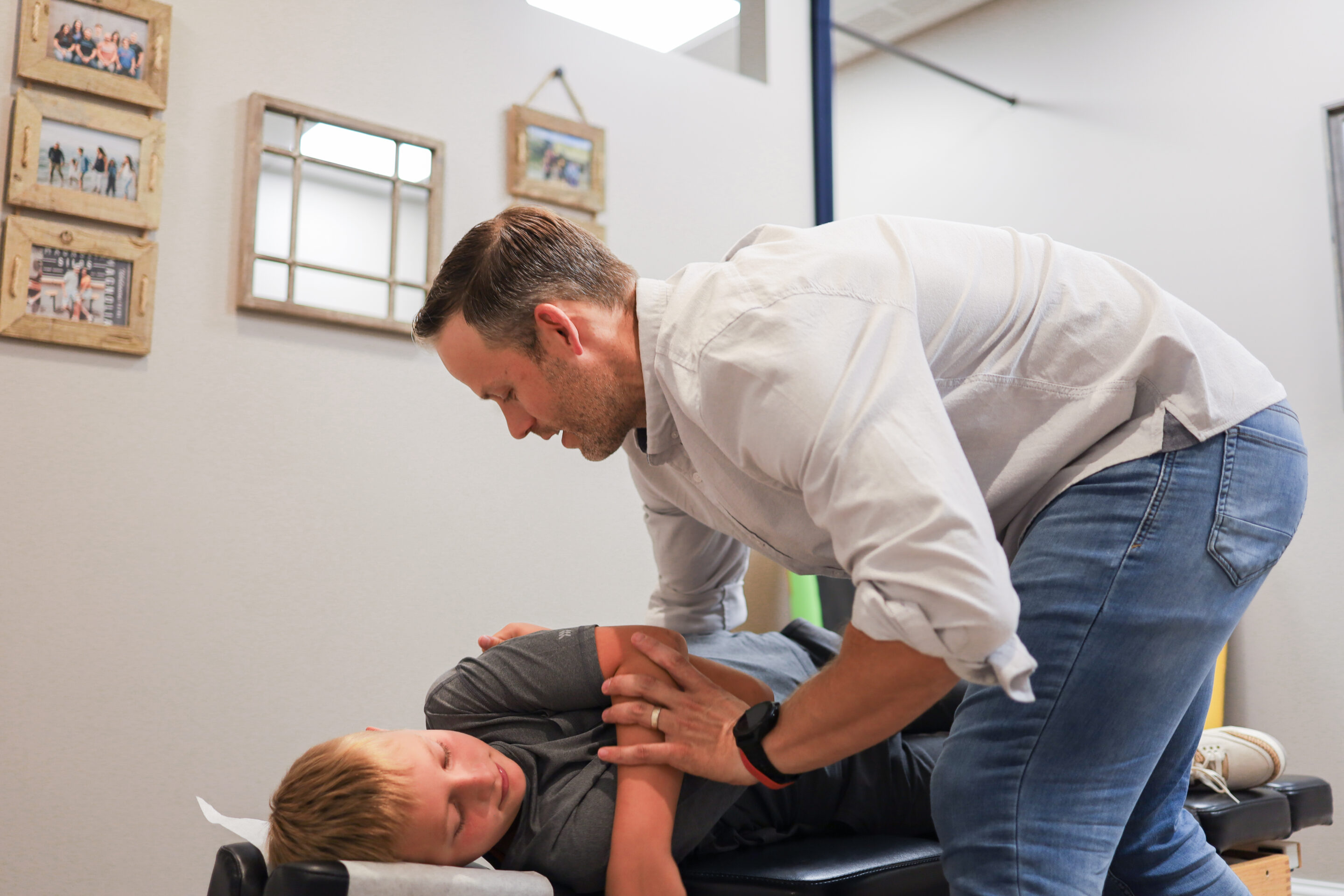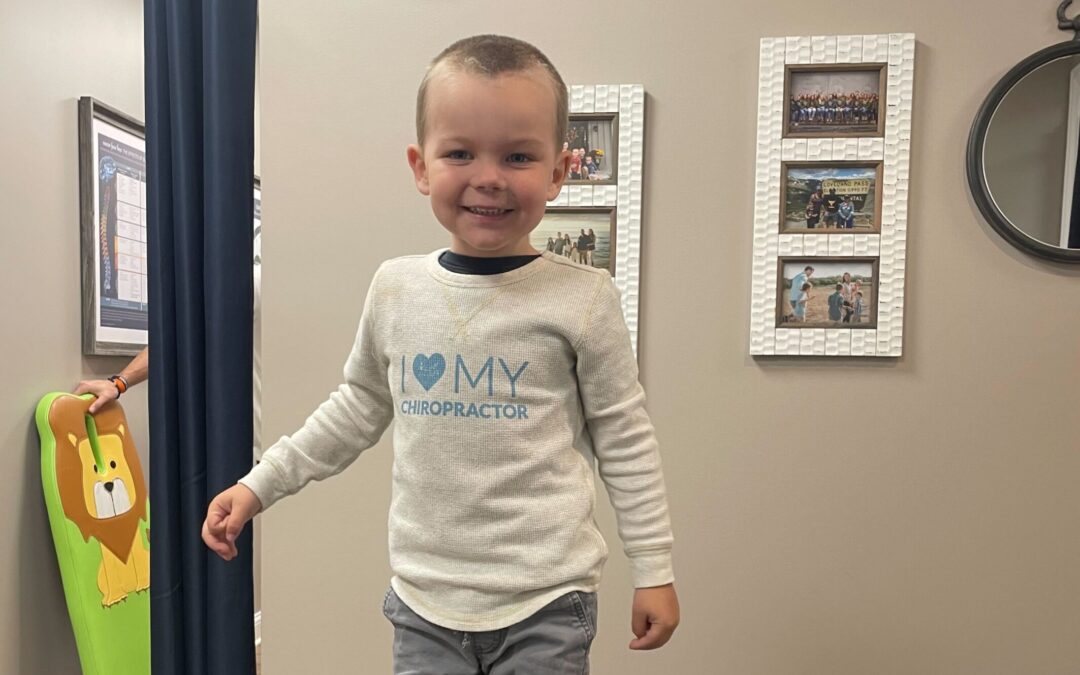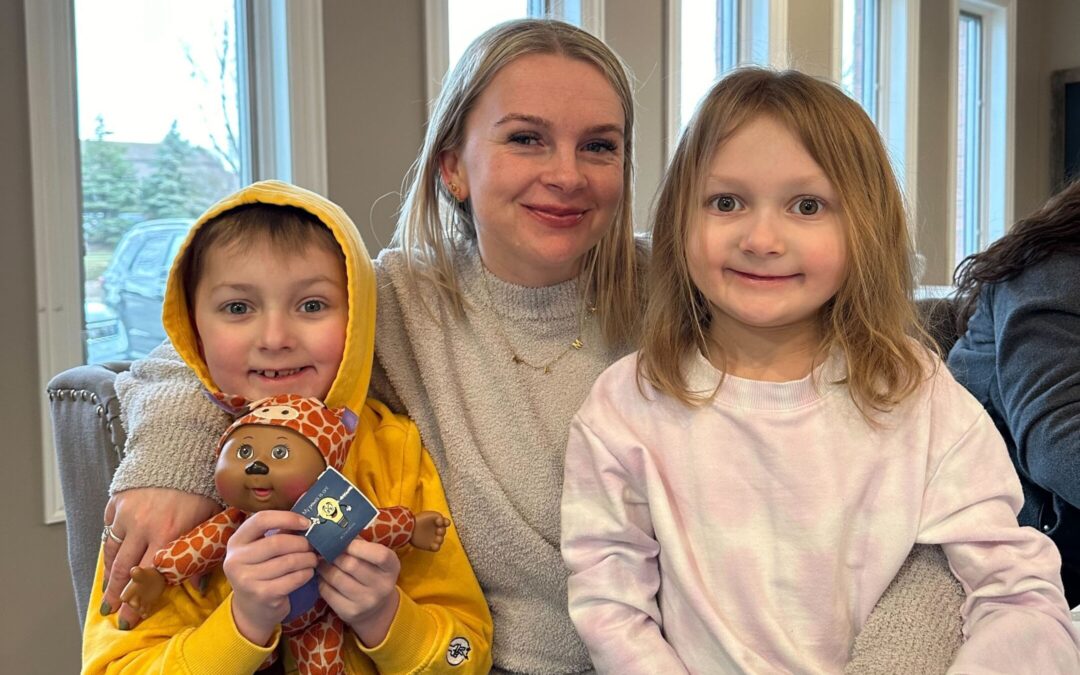As a parent, watching your once lively and cheerful child transform into an anxious, struggling kid is heartbreaking beyond words. Despite your best efforts to find answers from doctors, therapists, and specialists, you feel like nothing helps provide any real improvement. The avalanche of symptoms ranging from attention deficits to chronic digestive issues to sensory overloads continues while providers offer little beyond medications aimed at suppressing these problems.
Yet deep down, you know in your gut more must be going on. You feel strongly something has to tie all of these various health challenges together. Why would a child with no family history of health problems suddenly develop such a cascade of unexplained symptoms? And why do none of the solutions tried so far get to the root causes of what is disrupting their physical health, learning capacity, and even behavioral regulation?
Your intuition is absolutely right!
There are underlying issues not being addressed that tie all these challenges together. And that overlooked factor is parasympathetic nervous system and vagus nerve dysfunction. Never heard of it before? You’re not alone. Yet supporting parasympathetic nerve pathway functioning holds the key to resolving many drug-resistant pediatric illnesses.
Let’s define exactly what the parasympathetic system is and why it is so vital for overall nervous system equilibrium. Then, we’ll discuss how compromised signaling through the vagus nerve contributes to something called the “Perfect Storm”—connected conditions that all have nervous system imbalance at their core. And lastly, we’ll discover how new technology spots dysfunctional neural circuits so they can finally be corrected and restored.
Parents report life-changing improvements in longstanding health, sensory, behavioral, digestive, and immune problems after underlying parasympathetic and vagus nerve dysfunction is addressed – without drugs, surgery, or restrictive diets.
What is the Vagus Nerve?
The vagus nerve is the largest and most critical nerve of the parasympathetic nervous system. This cranial nerve runs from the brainstem down to nearly every major organ, earning it the nickname “the wandering nerve.”
Over 75% of all parasympathetic nerve fibers travel within the pathways of the vagus nerve. This highlights its indispensable role in nervous system communication, overall health, and self-healing processes.
When vagus nerve signaling falters, the body loses its capacity to “rest, digest, and regulate” properly. This leads to immune disruption, gut dysfunction, inflammation, headaches, anxiety, sleep disorders, and more. Supporting healthy vagus nerve function is essential.
What is the Parasympathetic Nervous System?
The parasympathetic nervous system (PNS) is one of the two main divisions of the autonomic nervous system (ANS), the control center managing all involuntary bodily functions. The complementary halves of the ANS work together to ensure equilibrium—the PNS drives “rest and digest” activate, allowing growth, restoration, and relaxation, while the sympathetic branch governs “fight or flight” stress responses.
Parasympathetic nerve pathways originate both in the brainstem (cranial nerves) and sacral spinal cord, extending to organs throughout the neck, chest, and abdomen. Communication flows in both directions, with sensory nerves sending signals back to the central nervous system. This stimulates key functions like lowering heart rate, promoting digestion and metabolism, regulating inflammation, and restoring homeostasis across multiple systems after periods of stress or activity.
The “Perfect Storm” Cascade
When children experience successive stressors and dysfunction starting very early in life, this leads to a self-perpetuating cascade of issues we refer to as “The Perfect Storm.” Key triggers often include:
- Fertility challenges and maternal prenatal distress disrupting development
- Birth interventions and trauma causing misalignment and nerve tension
- Infant gut dysfunction and disruption of the microbiome from medications and poor diet
- Altered and delayed motor tone, coordination, and development
This sequence sparks sympathetic nervous system dominance, impaired vagus nerve signaling, subluxation, inflammation, and more—keeping kids stuck in a chronic “fight or flight” pattern and unable to properly “rest and digest.”
The parasympathetic branch of the nervous system is most susceptible to birth interventions and trauma such as forceps, vacuum extraction, c-section, and induction since tremendous physical strain and tension is placed on the delicate nerves and muscles of the upper neck that house and protect the vagus nerve and parasympathetic system. Additionally, when learning to walk (especially if they struggle with gross motor challenges), many kids fall on their sacrum and tailbone which can disrupt parasympathetic nervous system function that way.
Understanding this cumulative overload is critical to getting the full picture and selecting interventions that can truly create change by addressing root causes.
Sympathetic vs. Parasympathetic Nervous Systems

The sympathetic and parasympathetic nervous systems are the two complementary branches of the autonomic nervous system that work together to maintain equilibrium in the body. The sympathetic system governs the “fight-or-flight” stress response, increasing heart rate, blood pressure, breathing, and alertness to prepare the body to confront threats. In contrast, the parasympathetic system controls “rest-and-digest” activities through the vagus nerve to conserve resources, slow heart rate, activate digestion, reduce inflammation, and promote regulation after threats have passed.
Imbalances between these two systems (dysautonomia) underlie many chronic health conditions, so supporting healthy parasympathetic signaling through the vagus nerve helps resolve these issues at their root cause.
Understanding the distinct roles and functions of each provides greater insight into nervous system signaling:
Sympathetic Nervous System
The sympathetic nervous system activates the body’s “fight or flight” response to stress, threats, or danger. Key effects include:
- Increased heart rate and blood pressure
- Redirected blood flow to muscles
- Release of cortisol and adrenaline
- Increased alertness and reaction time
- Pupil dilation and heightened senses
This prepares the body to confront threats by assembling its resources. The sympathetic nervous system is often protective and life-saving in the short term. However, chronic sympathetic activation is detrimental long-term.
Parasympathetic Nervous System
The parasympathetic nervous system governs “rest, digest, and regulate” activities through the vagus nerve. Its functions include:
- Slowed heart rate to conserve energy
- Increased blood flow to the gut and organs
- Activated digestion and absorption
- Lowered cortisol levels and inflammation
- Stabilized blood glucose levels
- Pupil constriction
This system activates after threats have passed, allowing regeneration critical for growth, healing, and development.
Additionally, we now know that the parasympathetic nervous system and vagus nerve are essential in our social and emotional well-being. Work and research done by Dr. Stephen Porges and others have shown that the vagus nerve has multiple branches within it, helping to organize and coordinate all the other essential functions it has. This includes regulating social and emotional well-being and so much more.
Since imbalance between the two systems and dysautonomia underlie so many chronic health conditions, supporting parasympathetic signaling and vagus nerve stimulation helps resolve these root issues.
The PNS-Gut-Brain Connection
The intricate coordination between the parasympathetic nervous system, digestive tract, immune cells, and central nervous system together form the “brain-gut-axis” – an integrated network regulating physiology, mood, and behavior.
Optimizing PNS activity also depends on cultivating a flourishing, diverse microbiome environment. Healthy gut flora support the stomach and intestines with essential functions like metabolizing nutrients, fortifying the gut lining, and manufacturing neurotransmitters that influence brain signaling.
Conversely, disrupted PNS nerve conduits slow motility and digestive secretions. Constipation, GERD, and food sensitivities can manifest as a result. The impaired gut-immune-brain dialogue further distresses physical, mental, and emotional health.
This gut dysfunction, combined with subluxation (neurological dysfunction), birth trauma, and inflammation, prompts a cascade of issues from SPD and ADHD to chronic infections and autoimmunity. Restoring healthy gut-nervous system communication and coordination is instrumental in resolving the root imbalance.
This is why so many patients continue to struggle with gut-immune-neuro-related health challenges even after making massive diet and nutritional changes, adding supplements and essential oils, and so forth. In so many cases, the original disruption of the gut microbiome is actually neurogenic in nature.
How to Activate the Parasympathetic Nervous System
Since the parasympathetic nervous system handles crucial rest, recovery, and digestive roles, activating its pathways is key for healing chronic conditions and fostering overall well-being. Here are effective ways to engage the “rest and digest” system:
- Slow abdominal breathing stimulates the vagus nerve and lowers stress hormones
- Gentle exercises like yoga support parasympathetic function without overstressing the body
- Relaxation practices such as warm baths, massage, meditation, nature exposure, and visualization elicit the relaxation response
- Staying well-hydrated and eating anti-inflammatory foods aids healthy digestion through parasympathetic stimulation
However, as wonderful and helpful as each of those natural ways to engage the parasympathetic system and vagus nerve can be, in today’s world, so many patients have their chronic stress and sympathetic nervous system so stuck on and locked in (subluxation), that these methods are simply not enough to get full and complete healing kicked into gear.
In these cases, it’s absolutely essential that the patient and family get connected to a Neurologically-Focused Pediatric + Family Chiropractor who can more potently and completely address the dysfunction, subluxation, and stuck neurological stress patterns. These safe, gentle, parasympathetic, and vagus nerve stimulating adjustments are truly the key to not just getting neurological healing started, but giving the patient a chance at full and complete recovery as well.
Finding the Root Cause: Subluxation and Dysautonomia
The puzzling onset of multi-systemic symptoms, including sensory overload tendencies, poor growth, and developmental delays, plague far too many children today. Yet the source of these overlapping issues often originates from one central location—the central nervous system—specifically an impaired, overloaded parasympathetic network.
At the heart of unbalanced PNS signaling lies something known as subluxation—areas of misalignment and tension creating interference along nerve pathways. This blockage affects the messages going to and from the brain, making it harder for them to flow smoothly, locking the nervous system into an overactive, aggravated state clinically termed dysautonomia.
Dysautonomia prevents restoring equilibrium between the sympathetic “fight or flight” and parasympathetic “rest and digest” branches. The constant stress damages physical structures like connective tissue, digestive lining, and blood vessels while also weakening the immune system and promoting inflammation. Emotional dysregulation, attention deficits, and behavioral struggles frequently follow.
The problem worsens in a vicious cycle until the root neurological dysfunctions and subluxations are cleared – something no pharmaceutical or other medical therapy attempts. New approaches first quantify nervous system stress, dysfunction, and imbalances through scans, then apply customized, evidence-informed techniques to gently release tension and restore neurological function and overall balance.
INSiGHT Scans Revolutionizing Assessment
Historically, measuring nervous system dysfunction proved challenging at best, making it difficult to tailor interventions precisely and track improvements or progress along the way. Technological advances now provide an invaluable window into what’s occurring inside kids’ bodies and are essential to the work we do as PX Docs.
A specialized nervous system function test called the INSiGHT Scans quantitatively assesses the central and autonomic nervous system status. Three scans measure something known as heart rate variability, sympathetic tone, and neurological interference with exceptional accuracy. The information acquired from these scans helps both families and doctors know how to proceed with a personalized care plan.
Heart rate variability indexes the parasympathetic influence over cardiovascular function – lower readings confirm suppressed vagus nerve output. When it comes to measuring and tracking the parasympathetic nervous system and vagus nerve function, there is no more important and effective test than HRV Scanning.
Restoring PNS Function with Chiropractic Care
Now that assessment methods can objectively diagnose nervous system overload and pinpoint regions requiring repair and restoration; the next step is selecting the right interventions to gently restore neurological balance and overall function. The approach taken needs to address root causes, not just suppress symptoms.
The solution is advanced Neurologically-Focused Chiropractic Care to improve neurological function. Personalized, manual adjustments are performed where misalignment and subluxation are present. This helps release patterns that are causing problems within your nervous system. As a result, communication between different parts of your nervous system comes back online.
Periodic progress scans throughout the care plan confirm to our PX Docs that the parasympathetic nervous system and vagus nerve function are truly being activated and restored and that healthier neurological patterns of communication are created. After care plans are completed, the child’s strengthened, stable nervous system maintains homeostasis better than ever, able to adapt and rebound from future stresses or infections. Having a fully responsive and healthy parasympathetic nervous system is essential to a child staying healthy and on track developmentally.
The Path Forward
Witnessing your child transform from distressed and struggling to smiling, sociable, and meeting their full potential is an incredible feeling. Assessing parasympathetic nerve supply and taking control of overlooked nervous system imbalances can make this a reality without risky medications or other interventions.
Specialized chiropractic care like that provided by the PX Docs Network offers a missing component far more aligned with parents’ wishes today than the wait-and-see or medication-suppression approach. Get your child scheduled for INSiGHT scans and HRV testing to definitively determine if poor vagus nerve and parasympathetic function is compromising their health and leading to a multitude of health challenges that could be resolved naturally and without medications.
Reach out to a PX Doc in your area today, found on our directory. Your child deserves to live their absolute best life — and now you are armed with the information you need to get there!





